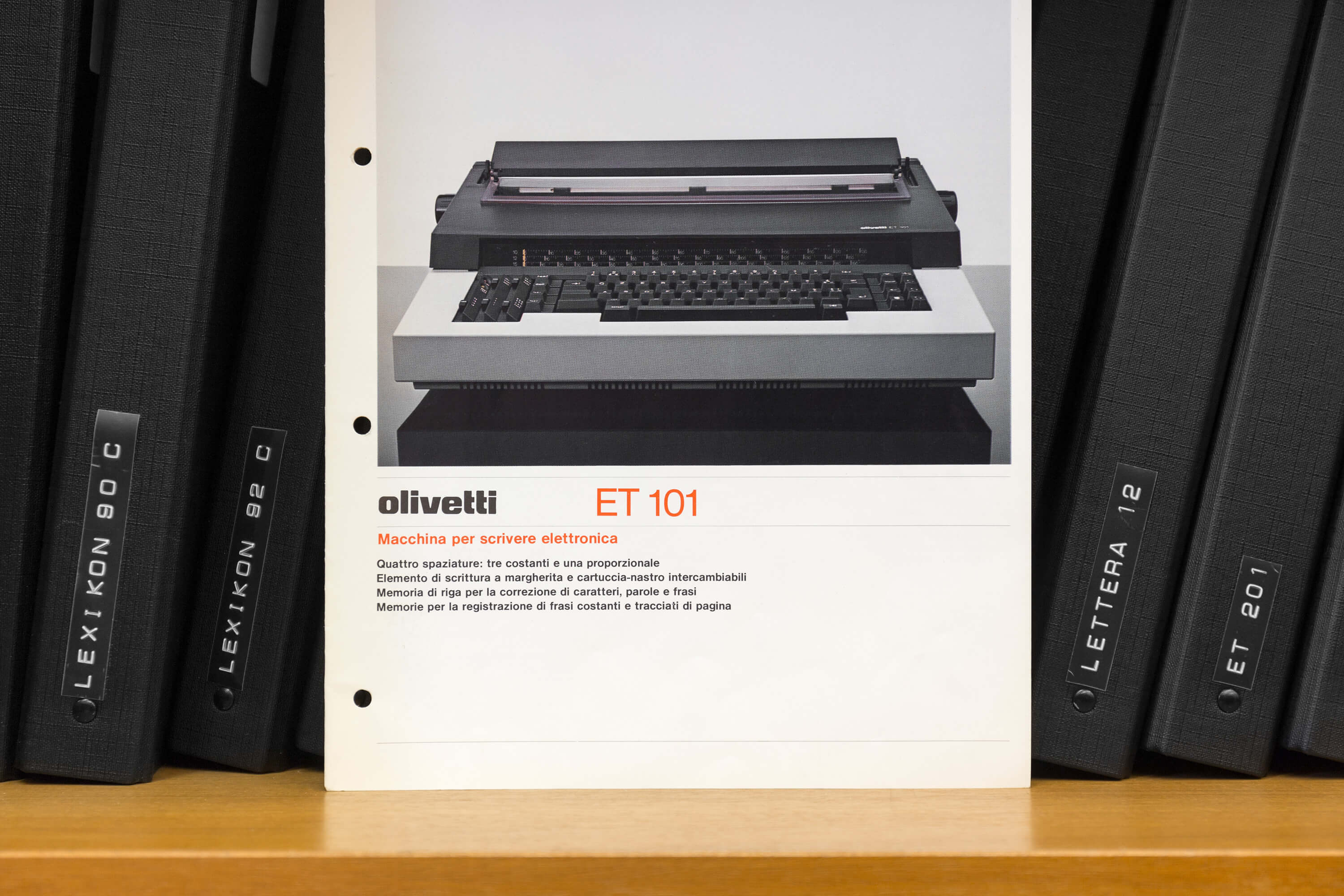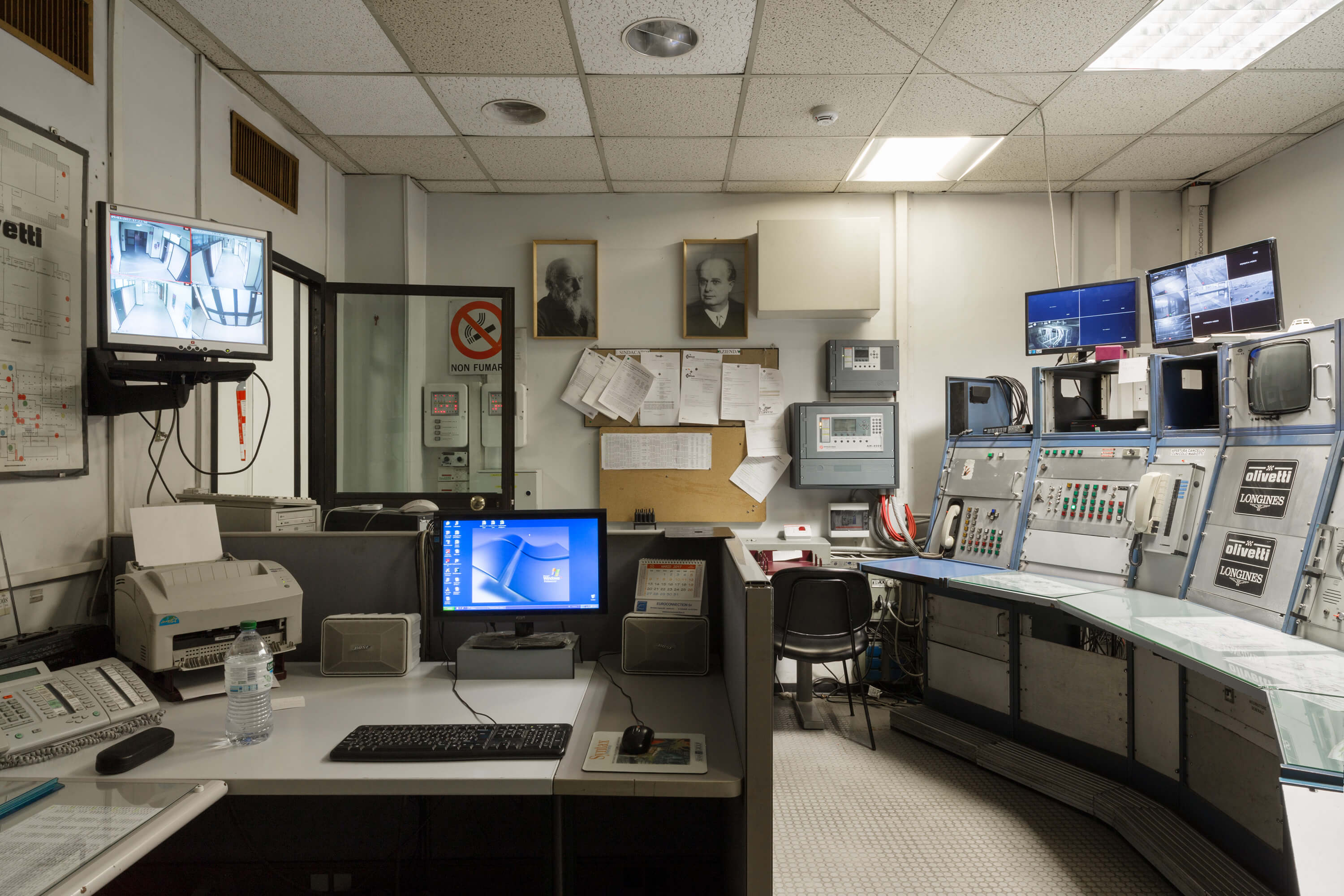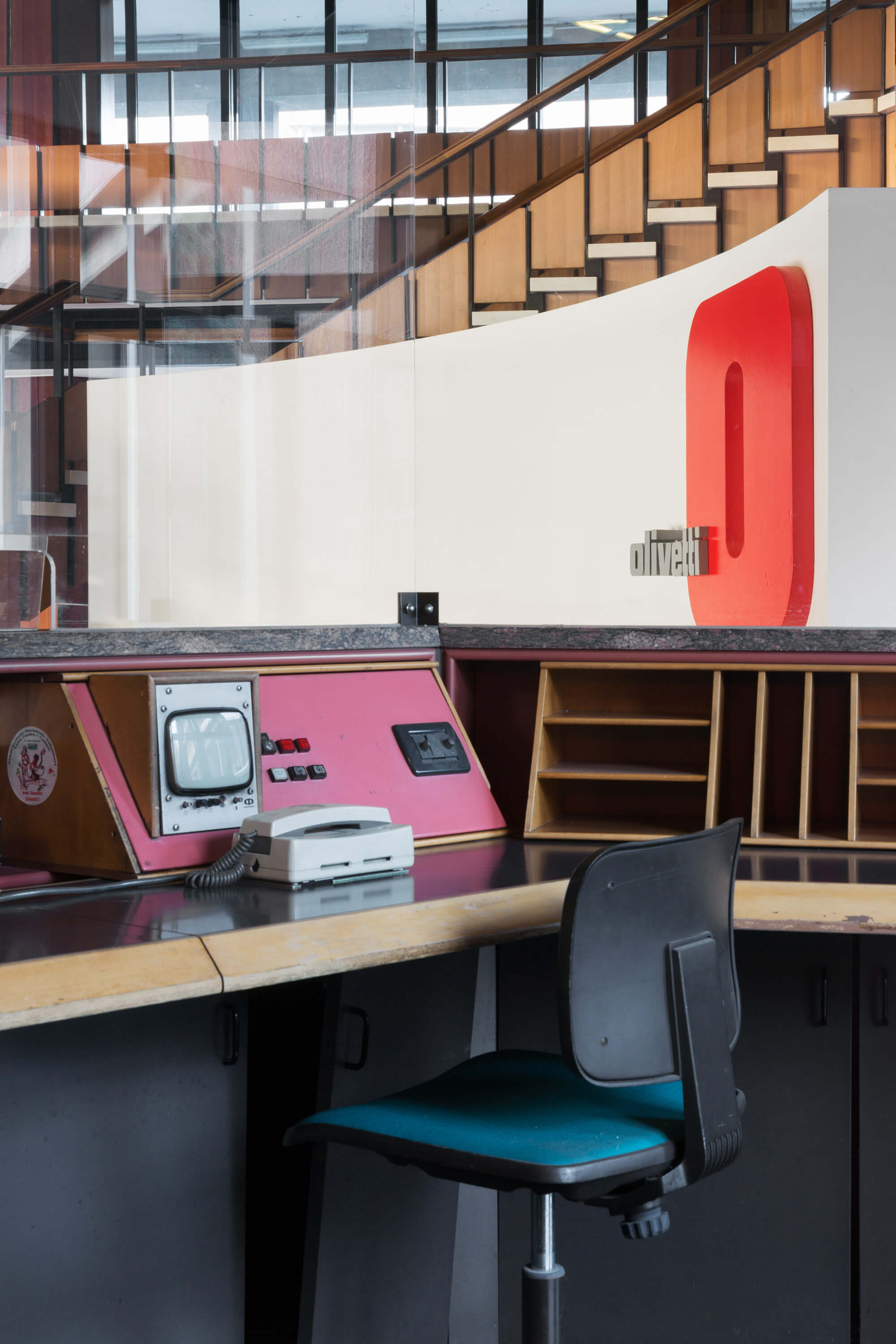But it used to be so cool
The section entitled But it used to be so cool is dedicated to a historical phase that represents the exact opposite of today’s economic situation. In the post-war period, the true golden age of twentieth century capitalism, the demand for products and everyday objects rose to never before attained summits. The Trente Glorieuses (1945-1975) produced extraordinary works in three decades of economic growth, welfare hyper-guarantees and high productivity (at least in the Western world).

The retrospective puts its focus on a company, Olivetti, that represents one of the most recognised symbols of the Italian economic boom. Featuring photographs taken by Louis De Belle at Olivetti’s headquarters and Archivio in Ivrea, the section tells of the golden period of Olivetti but also of its forthcoming vicissitudes dealing with the advent of digital electronics and the exhaustion of the post-war boom. After the striking success of products like Lettera 22, Divisumma, and Valentine, Olivetti has passed through several radical shifts that have changed the face of the company and its business priorities.

Olivetti S.p.A. was founded as a typewriter manufacturer by Camillo Olivetti and became famous under the guidance of his son Adriano. Adriano Olivetti led the company to its most successful era and made it a symbol of an “enlightened” form of capitalism by brilliant entrepreneurial insights and a particular care for the social consequences of his business. He also had a strong intellectual affinity and friendly relations with important figures in design, architecture and culture of its time - like Sottsass, Nizzoli, Volponi and Fortini, just to name a few – and promoted fruitful collaborations with them. Despite the singularity of the Olivetti case, the objects and the architectures portrayed in the photos by Louis De Belle bear witness to a historical period in which the fortune of a company and its capital accumulation was mostly the result of the objects it produced, of the quality of their design, and of the fertile biodiversity of the humans working on them. That is, of the real economy.

After that time, the history of capitalism has been highly affected by a key passage corresponding to a great turning point in the economy of the major Western countries. From the late Seventies, the implementation of neoliberal policies put an end to the post-war Keynesian consensus which lasted from 1945 to 1980. The answer to the slowdown in economic growth was not made of investments in innovation and production, but, following the neoliberal theories, governments promoted policies that fostered the expansion of financial profits and lower wages. Financialization relocates investments from objects and people to networks, systems and economies of scale. The central role of materials, objects and people gives place to dematerialisation, market fluidity and depersonalization.
In this context the objects and architectures displayed in the exhibition appear as the faded ghosts of a lost world. The historical Olivetti attitude to resilience and innovation suffered a fairly marked setback during the crises of the Seventies, which reduced investments in the production sector and initiated the financialized economy that today is reaching its full development. The growth of profits corresponded to a loss of identity and of the centrality of production’s contents, that became increasingly interchangeable. Although since the Eighties Olivetti’s revenues and number of employees has steadily increased, it is also clear that the progressive dematerialisation of its core business doomed the company. Olivetti gradually lost its productive and innovative bent and became essentially a financial investment vehicle.

In 1999, the Luxembourg-based company Bell S.A. acquired a controlling stake in Olivetti, but sold it to a consortium led by the Pirelli group two years later. Meanwhile the company had launched a hostile bid for Telecom (Italy’s number one fixed-line and mobile phone operator), despite being less than a seventh of the size of its target. Olivetti took the control of 51% of the shares, completing one of the greatest takeover bids in Italy’s history. Turned into a financial holding, within which the historical company’s branch of industry was just a marginal fraction, Olivetti was absorbed into the Telecom group in 2003, maintaining a separate identity as the little subsidiary Olivetti Tecnost (restored as just “Olivetti” in 2005), hardly recognizable as the company that was once leaded by Camillo, Adriano and Roberto Olivetti.